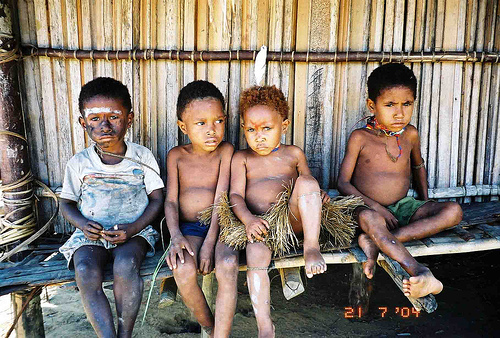Not only has the incidence of communal violence declined sharply, but new modes of inter-ethnic coalition building and cooperation have emerged. This is most visible in the direct elections of local government heads that are held every five years in the country’s 33 provinces and more than 500 districts. In areas which are ethnically mixed, a new political norm has emerged during these elections: the formation of cross-ethnic coalitions. For example, in the recent mayoral election in the city of Medan, the highly plural capital of North Sumatra, ten pairs of mayoral and deputy-mayor candidates contested the first round of the vote: every pair consisted of two individuals from different ethnic groups. This pattern is typical of multi-ethnic regions. Candidates know that unless they try to broaden their appeal by seeking support beyond their own ethnic group, they stand little chance of victory. When they campaign in such regions, candidates also expend much effort trying to show that they are responsive to the interests of multiple groups: they seek endorsements of differing ethnic associations, they attend cultural activities of different groups and they choose campaign slogans that stress their commitment to diversity and pluralism.
This is not to say that ethnicity is irrelevant in Indonesian politics. On the contrary, there is an emerging body of evidence to suggest that voters in many regions tend to prefer voting for political candidates who come from their own ethnic group. But in most parts of the country, electoral competitions take place in an atmosphere of ethnic coalition-building and compromise, rather than ethnic outbidding and competition.
How and why the transition from ethnic conflict to ethnic peace took place is a complex story. Part of the explanation lies in the simple fading of the turbulence of Indonesia’s democratic transition. As democracy has consolidated, ethnic conflict has declined as part of a broader waning of contentious politics. But much of the explanation also lies in the set of political institutions designed by Indonesia’s national leaders when the country began its democratic transition. One consequential decision was to disallow local political parties. In Indonesia, only political parties that can show they have a broad national presence are eligible to run in elections. Local parties are not allowed, making it very difficult for ethnic parties to establish a foothold (the only exception is in Aceh which, as a result of the 2005 Helsinki Memorandum of Understanding which ended that territory’s separatist war, is the only part of Indonesia where local parties are allowed). Overall, the result is that the contentious ethnic politics of the early years of the transition were never crystallised, captured or perpetuated by the party system.
Another key factor has been the decentralisation of political and economic power, a massive reform initiated in the years immediately following the fall of Suharto. However, decentralisation came with a catch. Power was devolved not to the large provinces, but to the much smaller districts. This has had the effect of fragmenting politics and splitting political identities. When political actors seek power at the district level, it makes little sense for them to appeal to large ethnic constituencies of the sort that could potentially be state-challenging.
Indonesia is one of the world’s great multi-ethnic societies. With a total population of around 230 million, at the last census more than 1000 separate ethnic categories were listed. The largest single group is the Javanese, at about 41 per cent of the population, next are the Sundanese (West Java) with about 15 per cent, but after that there is a multiplicity of much smaller groups. Many regions of the country lack a dominant core but are instead complex mixtures of large numbers of groups. This context is the setting in which a new politics of ethnic compromise is emerging. Had Indonesia’s democratic transition played out differently, it could easily have become an arena of ethnic polarisation and entrenched conflict. It is a remarkable achievement that Indonesia’s democratic transition avoided this outcome.
Edward Aspinall is the head of the Department of Political and Social Change, School of International, Political and Strategic Studies, College of Asia and the Pacific, Australian National University.

